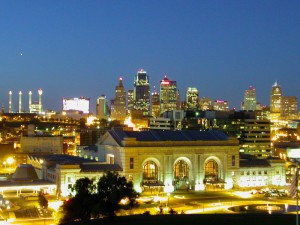By Natalie Walker
Since this is my last blog post for my internship, I decided to do a little reading in an attempt to find some overarching quote that would inspire people to think more deeply about Public History and its importance. Suffice it to say, I found myself pouring over the pages of Freeman Tilden’s Interpreting Our Heritage because his concepts are so simple and brilliantly obvious. At the same time, his words remind me why I have a passion for Public History and why I know I want to pursue a career in the Museum field.
So, what does this have to do with Historic Preservation (where I have been interning the past semester)? Well, in the past four months, I have found myself to be exactly the kind of person that Tilden describes in his book. I, like anyone else, require some sort of a connection to whatever I am learning, reading, writing, or viewing. Not just any connection, but a personal connection that allows me to relate to something through my own life experience. Tilden describes this as “the visitor’s chief interest” which is “whatever touches his personality, his experiences, and his ideals.” Essentially, if a museum, a national park, or, even a guidebook to Kansas City’s historic buildings and neighborhoods does not establish a personal connection with the visitor/reader then it will not keep their interest.
 I can look back on my time of research and writing and distinctly remember moments when I began researching a site and realized I had driven by it a number of times or even been to the location. Knowing the history of a place automatically made it seem important to me, not to mention the fact that I had written about it, so I was personally invested. As I wrote the sites, I tried to remember that I was not the only one who would potentially develop a chief interest in some part of the guidebook based on its relevance to their own life. It was thoughts like these that made me want to pull out as much history as possible so that someone reading the site description might find a personal connection with the location because they live near it or drive by it, or any other myriad of reasons.
I can look back on my time of research and writing and distinctly remember moments when I began researching a site and realized I had driven by it a number of times or even been to the location. Knowing the history of a place automatically made it seem important to me, not to mention the fact that I had written about it, so I was personally invested. As I wrote the sites, I tried to remember that I was not the only one who would potentially develop a chief interest in some part of the guidebook based on its relevance to their own life. It was thoughts like these that made me want to pull out as much history as possible so that someone reading the site description might find a personal connection with the location because they live near it or drive by it, or any other myriad of reasons.
 I am truly grateful for my internship experience. Of course, it was definitely a challenge to learn architecture terms and to write about them with confidence, but I now feel connected to Kansas City in a way I never thought possible. Moreover, I was fortunate enough to take part in making real, public history. My underlying goal during this project was to latch onto the reader’s chief interest by reminding future readers of the rich history in their backyards that will hopefully spark a personal connection because of the relevance of Kansas City History to their own lives.
I am truly grateful for my internship experience. Of course, it was definitely a challenge to learn architecture terms and to write about them with confidence, but I now feel connected to Kansas City in a way I never thought possible. Moreover, I was fortunate enough to take part in making real, public history. My underlying goal during this project was to latch onto the reader’s chief interest by reminding future readers of the rich history in their backyards that will hopefully spark a personal connection because of the relevance of Kansas City History to their own lives.
